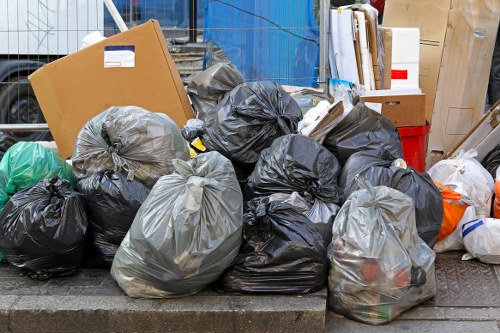Efficient Waste Removal in Furniture Collection

In today’s environmentally conscious world, waste removal plays a critical role in maintaining sustainable practices. When it comes to furniture collection, managing waste effectively ensures that unwanted items are disposed of responsibly, minimizing environmental impact.
Furniture waste can accumulate quickly, especially for businesses like offices and hotels that regularly update their interiors. Proper waste removal services help in recycling and reusing materials, thereby reducing landfill burden.
Implementing a structured waste removal strategy in furniture collection not only promotes sustainability but also offers financial benefits through recycling incentives and reduced disposal costs.

Understanding Waste Removal in Furniture Collection
Waste removal in furniture collection involves the systematic process of gathering, transporting, and disposing of old or unwanted furniture. This process is essential for both residential and commercial settings to maintain clean and functional spaces.
Effective waste removal ensures that furniture is either recycled, refurbished, or disposed of in an environmentally friendly manner. This helps in conserving resources and reducing the carbon footprint associated with furniture production.
Moreover, proper waste management in furniture collection can help prevent health hazards by eliminating clutter and ensuring that spaces remain safe and hygienic.

The Importance of Sustainable Waste Removal
Sustainable waste removal practices are crucial in furniture collection to promote environmental stewardship. By prioritizing recycling and reuse, we can significantly decrease the amount of waste sent to landfills.
Recycling furniture components, such as wood, metal, and upholstery, reduces the demand for new raw materials, thereby conserving natural resources and lowering energy consumption in manufacturing processes.
Additionally, sustainable waste removal helps in reducing greenhouse gas emissions associated with decomposing furniture waste, contributing to the fight against climate change.

Steps Involved in Furniture Waste Removal
1. Assessment and Planning
Before initiating waste removal, it’s essential to assess the volume and type of furniture to be collected. This helps in planning the logistics, including transportation and disposal methods.
2. Collection and Transportation
Efficient collection involves coordinating schedules and ensuring that furniture is transported safely to recycling centers or disposal sites. Using appropriate vehicles and handling equipment is critical to prevent damage and ensure safety.
3. Recycling and Disposal
Once collected, furniture is sorted based on materials. Recyclable items are sent to processing facilities, while non-recyclable components are disposed of according to local regulations.

Benefits of Professional Waste Removal Services
- Expertise: Professionals have the knowledge and experience to handle various types of furniture and materials safely.
- Efficiency: Streamlined processes ensure timely removal and minimal disruption to your operations.
- Compliance: Adherence to local regulations and environmental standards prevents legal issues and promotes sustainability.
- Cost-Effective: Proper waste removal can reduce overall costs through recycling incentives and lower disposal fees.
Choosing a reliable waste removal service for your furniture collection needs ensures that the process is handled smoothly, efficiently, and responsibly.
Contact us today to learn more about our professional waste removal services and how we can assist you in maintaining a sustainable and clutter-free environment.
Eco-Friendly Practices in Furniture Waste Removal
Adopting eco-friendly practices in furniture waste removal is essential for reducing environmental impact. This includes:
- Recycling Materials: Separating materials like wood, metal, and fabric for recycling.
- Refurbishing Furniture: Restoring old furniture for resale or donation.
- Responsible Disposal: Ensuring non-recyclable items are disposed of safely.
Implementing these practices contributes to a circular economy, where materials are reused and recycled, minimizing waste and conserving resources.
By integrating sustainable waste removal strategies into your furniture collection process, you not only contribute to environmental preservation but also enhance your organization’s reputation as a responsible and eco-conscious entity.
Furthermore, educating employees and stakeholders about the importance of proper waste management can foster a culture of sustainability within your organization.
Investing in effective waste removal services is a step towards creating a greener future while maintaining operational efficiency.
Remember, the key to successful furniture waste removal lies in proper planning, execution, and a commitment to sustainability. Embrace these practices to achieve a balanced and eco-friendly approach to managing your furniture collection needs.
Book your service now and take the first step towards a more sustainable and organized environment.